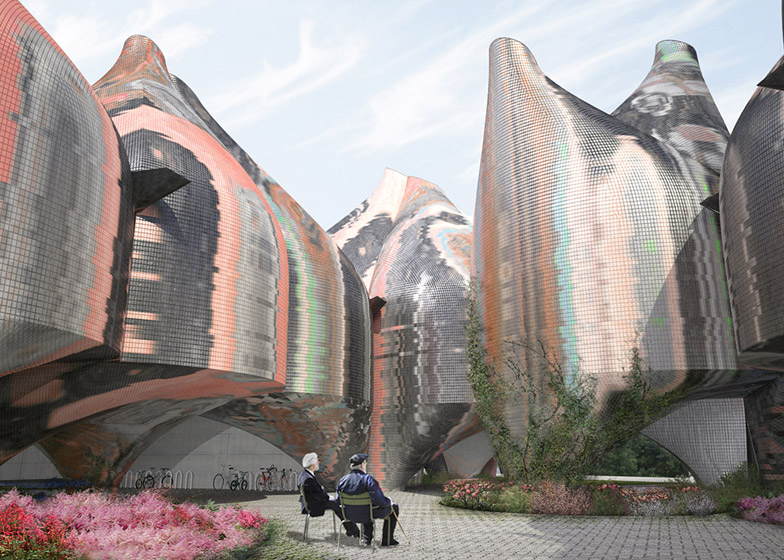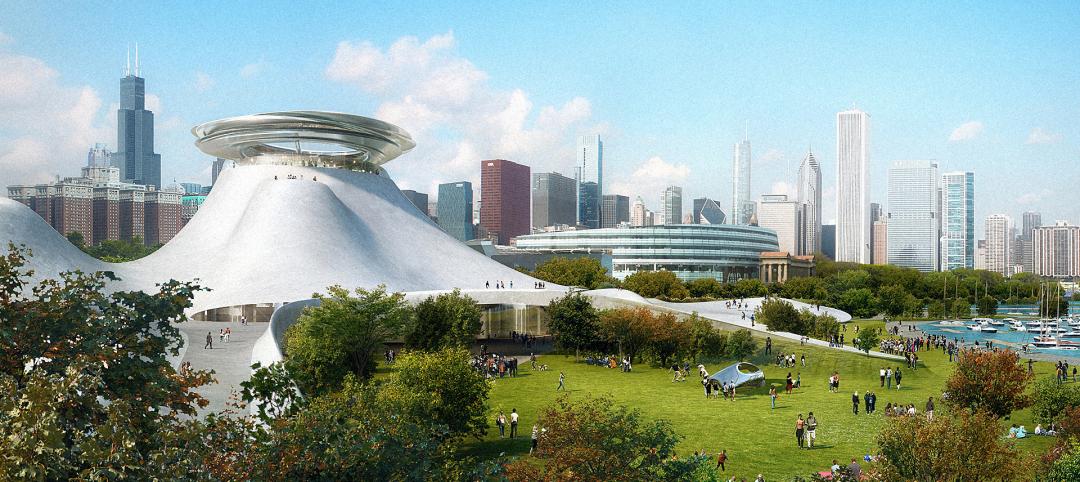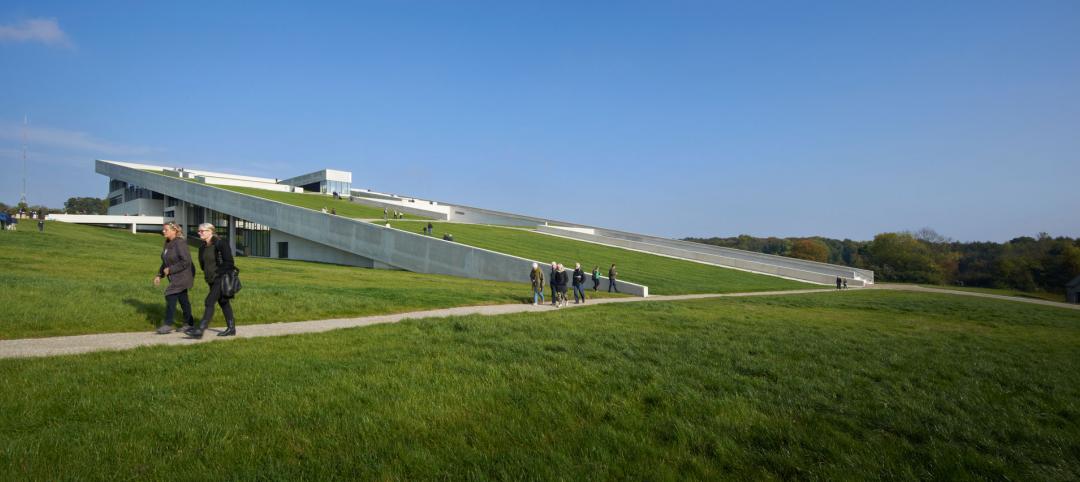After holding an international design competition for the Bauhaus Museum Dessau, an influential German art and design school, two winners have been named, reports Dezeen.
The two proposals could not look any more different.
The first, designed by Spanish architect Gonzalez Hinz Zabala and landscape firm Roser Vives de Delás, is a rectangular black bar bridge made of glass that sits upon a glazed lower floor (pictured below).
"Our project offers playful contrasts as heaviness and lightness, opacity and transparency, system and flexibility, order and spontaneity," says the Gonzalez Hinz Zabala website.
 Gonzalez Hinz Zabala's museum design. Rendering courtesy Gonzalez Hinz Zabala, via Dezeen
Gonzalez Hinz Zabala's museum design. Rendering courtesy Gonzalez Hinz Zabala, via Dezeen
The second is a colorful set of structures consisting of connected pods that create walkways underneath (pictured at top). This concept was created by New York architecture studio Young & Ayata and landscape architect Misako Murata. It has a "concrete base and timber lattice frame structure clad with sintered glass tiles," according to the Young & Ayata website.
The winners were chosen by a jury that evaluated anonymously-presented submissions. It is still uncertain if the museum will declare an ultimate winner or if it will incorporate both designs, according to Dezeen.
"The two first-prize winners are very diverse," said Chris Dercon, Director of London's Tate Modern, who was quoted in the Dezeen story. "It will be a chance to start the discussion in the international public and with experts. To be the beginning of the new, Dessau and the Bauhaus are ideal places."
Related Stories
| Nov 14, 2014
Bjarke Ingels unveils master plan for Smithsonian's south mall campus
The centerpiece of the proposed plan is the revitalization of the iconic Smithsonian castle.
| Nov 12, 2014
Chesapeake Bay Foundation completes uber-green Brock Environmental Center, targets Living Building certification
More than a decade after opening its groundbreaking Philip Merrill Environmental Center, the group is back at it with a structure designed to be net-zero water, net-zero energy, and net-zero waste.
| Nov 7, 2014
NORD Architects releases renderings for Marine Education Center in Sweden
The education center will be set in a landscape that includes small ponds and plantings intended to mimic an assortment of marine ecologies and create “an engaging learning landscape” for visitors to experience nature hands-on.
| Nov 5, 2014
The architects behind George Lucas' planned Chicago museum unveil 'futuristic pyramid'
Preliminary designs for the $300 million George Lucas Museum of Narrative Art have been unveiled, and it looks like a futuristic, curvy pyramid.
| Nov 3, 2014
IIT names winners of inaugural Mies Crown Hall Americas Prize
Herzog & de Meuron's iconic 1111 Lincoln Road parking garage in Miami Beach, Fla., is one of two winners of the $50,000 architectural prize.
| Oct 29, 2014
Diller Scofidio + Renfro selected to design Olympic Museum in Colorado Springs
The museum is slated for an early 2018 completion, and will include a hall of fame, theater, retail space, and a 20,000-sf hall that will showcase the history of the Olympics and Paralympics.
| Oct 23, 2014
Prehistory museum's slanted roof mimics archaeological excavation [slideshow]
Mimicking the unearthing of archaeological sites, Henning Larsen Architects' recently opened Moesgaard Museum in Denmark has a planted roof that slopes upward out of the landscape.
| Oct 16, 2014
Perkins+Will white paper examines alternatives to flame retardant building materials
The white paper includes a list of 193 flame retardants, including 29 discovered in building and household products, 50 found in the indoor environment, and 33 in human blood, milk, and tissues.
| Oct 15, 2014
Harvard launches ‘design-centric’ center for green buildings and cities
The impetus behind Harvard's Center for Green Buildings and Cities is what the design school’s dean, Mohsen Mostafavi, describes as a “rapidly urbanizing global economy,” in which cities are building new structures “on a massive scale.”
| Oct 12, 2014
AIA 2030 commitment: Five years on, are we any closer to net-zero?
This year marks the fifth anniversary of the American Institute of Architects’ effort to have architecture firms voluntarily pledge net-zero energy design for all their buildings by 2030.
















